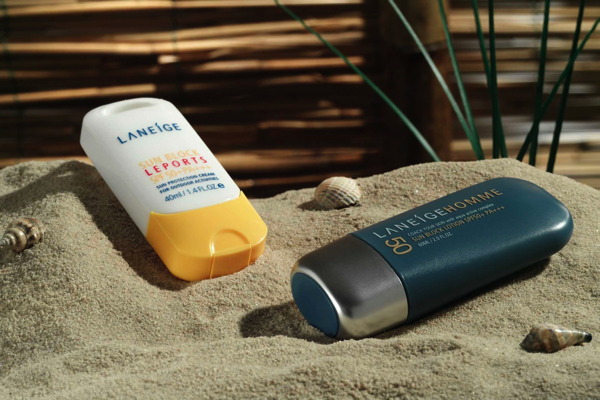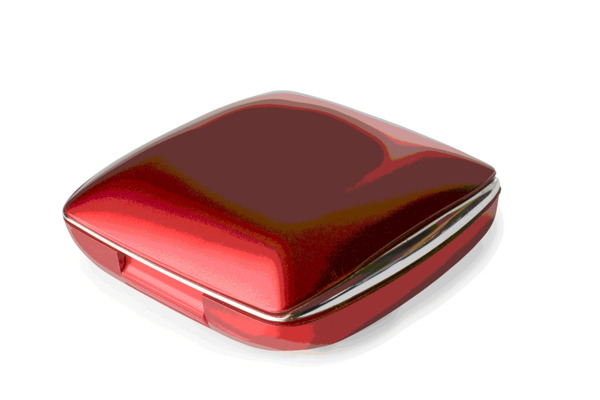
Premium Beauty News - Could you tell us a few facts about your group and its presence in the beauty market?
Jonathan Cohen - People are not always aware of the fact that our group has over two hundred years of existence. Founded in 1802, DuPont currently employs some 57 000 people in 70 countries and our Research and Development department has 75 laboratories around the world. In 2008, our turnover exceeded 30 billion dollars.
In the beauty sector, DuPont is operating both, in the market of cosmetic ingredients and packaging. Our packaging offer includes Surlyn® used for its aesthetic properties, chemical resistance and cost optimization for perfume closures or cream jars, but also, scratch resistant or transparent blown-extruded bottles. Also available, Selar® PA for mascaras and nail polishes and Tynex® for brush filaments. Among our novelties, we are currently launching the Surlyn® 3D overmoulding technology to help brands owners still better differentiate their luxury packaging, and high performance bio-materials such as Biomax®.

Premium Beauty News - Environmentally speaking, you focused on short term goals!
Jonathan Cohen - Very short term, even! As of 1990, we had set goals in terms of sustainable development for 2010, goals that we reached in 2007! We therefore decided to set new goals for 2015. Specifically, concerning discharges of greenhouse gas emissions into the atmosphere, our plants have already reduced them by 72% since 1990 and we will cut them down another 15% by 2015. We also have important objectives regarding quality of air, water usage or concerning our fleet of vehicles.
But what is really challenging is that, in addition to the aims of reducing our own environmental footprint, we have set aims to help our customers reduce their footprint by 2015. For example, we have as an objective to sell 2 billion dollars worth of technologies and new materials to help reduce CO2 emissions or to save energy. We also want to double revenues which are not related to the use of fossil fuels by 2015. And for example, we are investing in R & D consequently in renewably-sourced materials. At DuPont, sustainability is not perceived as a constraint or a necessity but it is an integral part of our mission and strategy. It is a real growth engine.
Premium Beauty News - Is the beauty packaging market really ripe?
Jonathan Cohen - It is true that for a long time only brands with a "green or natural" positioning were always in search of ingredient or packaging related technologies aiming at environmental footprint reduction. Other firms felt less concerned, especially since most consumers did not view environment as a selection criterion for beauty and even less luxury.
But things have changed. You just need to take a look at the number of beauty products marketed clearly displaying environmental goals. We even witnessed quite a boom in 2008 and 2009. Today, most major players have clear ambitions, but they are uncompromising with quality. And they are right.
There is a trend for green packaging... But the whole question of course is "what is sustainable packaging?"Here we are entitled to all sorts of answers which remain unclear to consumers and most industry players: biodegradable or compostable? Reduction of C02 or of other greenhouse gas emissions? Bio-derived plastics or bagasse board? Recyclable or recycled? ... There is much confusion about what must be done and what can be done.

Premium Beauty News - What is your outlook on the subject?
Jonathan Cohen - Above all, we try being pragmatic! A packaging is used primarily for its functionalities and performance. Packaging is not just waste. Every packaging has a value: they are used to protect products, reduce product losses (which often require much more resources than the packaging itself), communicate with the consumer and in luxury and beauty segments, they are often an integral part of the product being themselves an art object or a collector’s item (think of perfume bottles for example) or for their applicator which turn them into a nomadic product. That said, it is necessary to optimize packaging and not use too much. Sustainable design becomes and will become increasingly important. How can the right balance be found between performance, environment and cost? It is more important to have a well thought out packaging, performing, and that sells, rather than a too light packaging, losing its qualitative aspect, even if it is biodegradable.
About our vision on sustainable packaging in the future, we believe that materials of recycled and renewable origin (bio-derived) will be the majority with good performances and costs comparable to existing materials. Packaging will have optimized sizes, production steps will be streamlined and the use of solvents reduced or even suppressed.
For the end-of-life, the goal will be to avoid garbage dumps and prefer recycling operations or energy production from burning waste. From our point of view, biodegradable is not the miracle answer, but it is an end-of-life process which brings real benefits to some applications. When the sorting is easy, the industries exist (fast food, for example).
Each type of packaging should be considered on a case by case basis, bearing in mind the following:
– Packaging performances: to protect and preserve products but also respect the aesthetic and deluxe aspect which help sell the product and meet consumer expectations.
– Environmental Impact: to reduce the impact on environment, one must be aware of the source of materials from which it originates, of its production process and to the packaging’s optimal end of life.
– Economic equation: optimize or reduce costs.
For environmental aspects, there are no secret recipes, but there are existing technologies that currently help reducing the environmental impact of packaging without compromising on performance. Why not use a glossy and scratch-resistant material, rather than add a layer of lacquer often solvent-based? Why not reduce the weight of jars while keeping their transparency? Why not reduce the thickness of some films if it is not a value added criterion for the consumer?
We must encourage companies to engage on the long way leading to sustainable packaging. There is no perfect answer, but there are currently existing technologies which can provide an environmental improvement without compromising on performance. That’s why DuPont is investing notably in DuPont Packaging Awards to award companies innovating in this area.
Premium Beauty News - What is the impact on the products you put on the market?
Jonathan Cohen - We seek to innovate with products and technologies bringing benefits in terms of performance, environmental impact and cost reduction. A sustainable packaging, must clearly integrate these 3 criteria. Our new development, Biomax® resins, is a good example meeting these 3 expectations. It is made from renewable sourced contents, it is naturally glossy and scratch-resistant which helps avoiding the costly steps of varnish coating on make-up parts. It therefore helps reducing the final cost of closures. This material is compatible and has good barrier proprieties to offer to cosmetic-applications similar to material originating from traditional plastics such as polyester.
Premium Beauty News - But Biomax® is not your only answer?
Jonathan Cohen - Of course not! We have a number of possible combinations depending on needs which can be, as you know, unlimited.
Used in injection molding or blow molding, Surlyn®, with its low density, natural gloss, chemical resistance and scratch resistance, helps reduce costs and CO2 emissions by skipping the use of lacquer or PP inserts on closures, jars or parts traditionally made from less performing materials such as polyesters, PMMA or ABS/SAN.
Used in flexible packaging and smaller bags, Surlyn® can also significantly reduce the thickness of films while maintaining performance, quality feel and easy opening.
In printing, flexographic printing presses and Cyrel® FAST technology can eliminate the use of solvent in the manufacture of flexographic printing plates and even reduce CO2 emissions compared to rotogravure.
Some technologies already exist which help to begin reducing the environmental impact without compromising on performance. We should not wait any longer and get moving on the road leading to sustainable development.




























